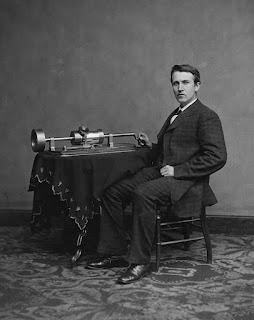“Without music, life would be a blank to me.” — Jane Austen, Emma
Gilded Age entertaining and music went hand in hand. Attending the opera, musicales, or grand balls with a live orchestra was a common social activity for the Gilded Age elite. Live music was also a frequent component of at-home entertaining. When Ruth Mills held a reception for Alice Roosevelt on the occasion of her father's election as President, the Staatsburg Band serenaded her, and the Hungarian Band played music for the evening's dancing.
It was during the Gilded Age, that a whole new way to listen to music was developed. Thomas Edison invented the phonograph in 1877, which was the first generally reliable device to record and play back audio. The sound was fairly scratchy by modern standards, but the technology worked and continually improved over time. The phonograph was a cylinder playing machine, and by the 20th century it was replaced with the disk phonographic record. With this new technology, a machine now existed that could bring recorded music into the home and public spaces.
 |
| Thomas Edison and his second phonograph, 1878 |
